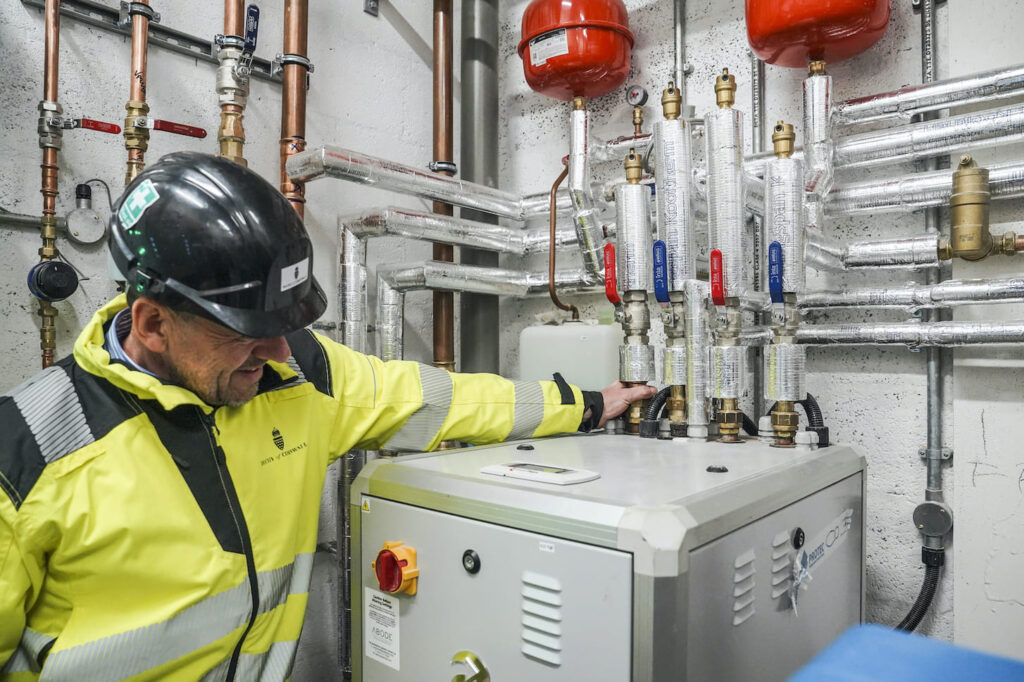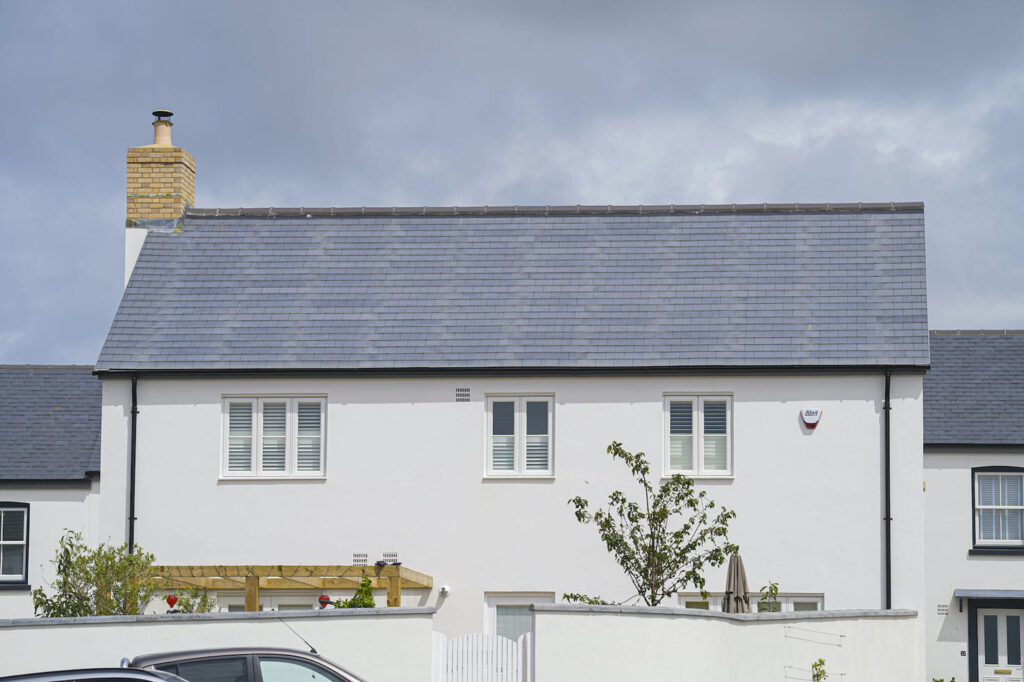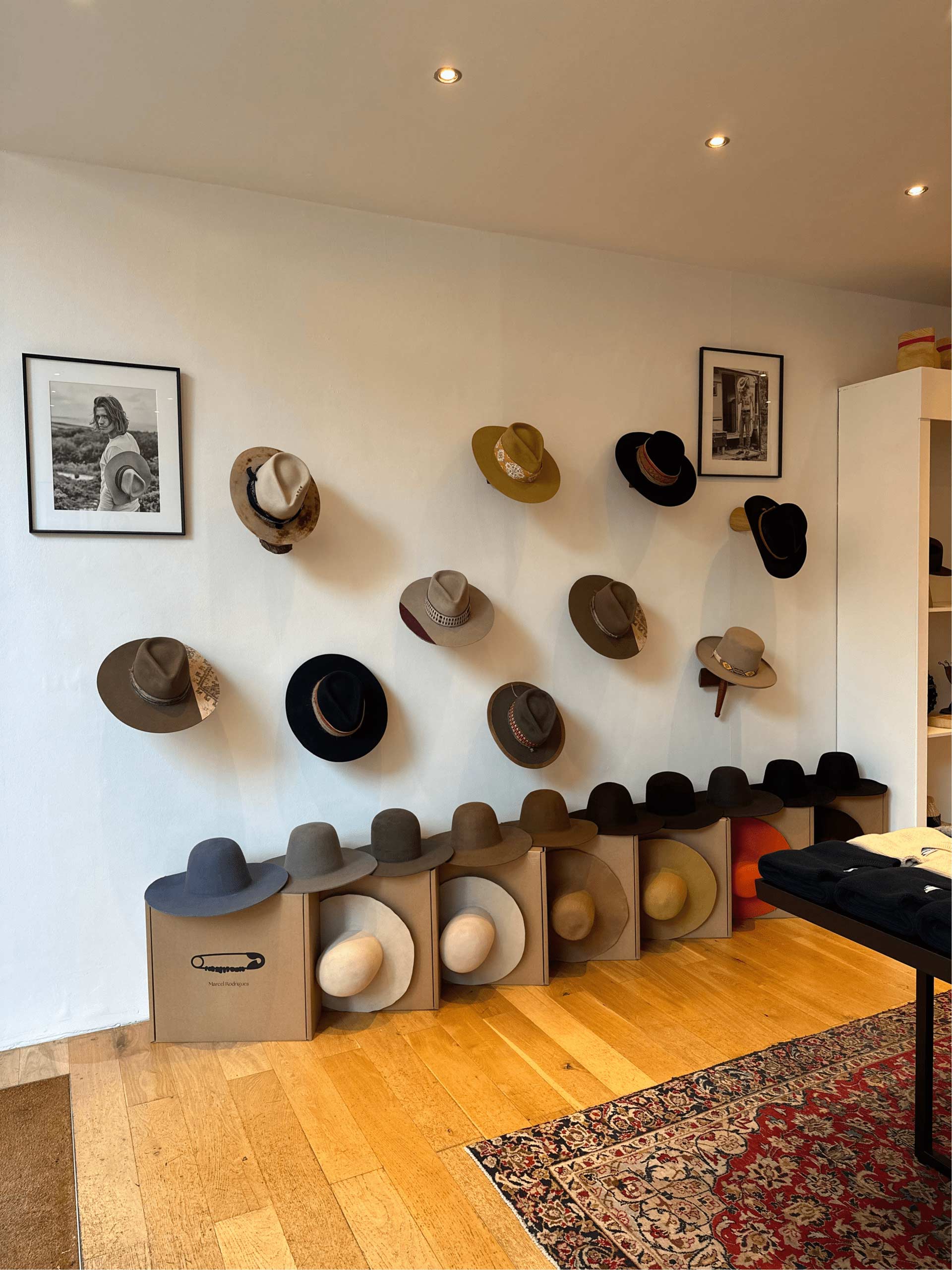The Duchy of Cornwall’s Nansledan development at Newquay is setting new standards for low carbon homes in both construction and operation.
The Duchy has always taken a more holistic approach to building sustainable communities that allow people to live more sustainable and healthy lifestyles, increases biodiversity and minimises the impact of construction on the environment.
Now a series of pilot projects at Nansledan have shown that the combination of good design, sustainably sourced materials, innovative construction methods and the latest renewable energy technologies is accelerating the transition to net zero development.
The specification of upcoming homes at Nansledan are now exceeding 2030 targets set by leading industry bodies LETI (Low Energy Transformation Initiative) and RIBA (Royal Institute of British Architects) for embodied carbon and operational carbon respectively.
Embodied carbon includes all greenhouse gas emissions associated with the construction of the homes, including extraction, processing, manufacturing and transportation of materials. Operational carbon is the carbon released from the ongoing operation of a building including lighting and heating.
Low carbon materials and technical innovations at Nansledan include:
- Cornish slate, local stone and granite mined less than an hour from the development – using low process, local materials significantly reduces embodied carbon.
- Increasing levels of insulation and airtightness well beyond building regulation requirements – reducing the operational carbon from heating homes by up to 53% from current Building Regulations, reducing the cost of living and working in Nansledan.
- Use of concrete and blockwork containing up to 93% recycled secondary aggregates from mining waste.
- Bio-based materials, including the introduction of timber framed homes.
- Use of lime-based renders instead of cement-based products.
- Replacing steel structural components with timber or low carbon concrete alternatives.
- Solar PV slates that look like a traditional slate roof but generate enough renewable electricity to power the home.
- Installation of domestic batteries to store excess renewable electricity generation, to maximise the homeowner’s use of free solar energy.
- Use of spandrel panels instead of blockwork above wall plates.
- Replacing all Class 1 flues with prefabricated chimneys, reducing carbon and material waste while maintaining the roofscape aesthetic.
- Use of air source and ground source heat pumps in homes and commercial spaces.
- Potential for community based ‘microgrids’, combining solar PV generation and centralised battery storage to further maximise use of renewable energy, helping to further reduce energy bills for Nansledan residents and businesses.
Ben Murphy, Estates Director at the Duchy of Cornwall, said: “The Duchy has long been committed to reducing carbon emissions as we build ever more sustainable communities for the benefit and enjoyment of local people. This is why we are working with our consortium of housebuilders at Nansledan to trial new materials and technologies on the path to net zero.
“By focusing on the use of local natural materials it was not a giant leap for us to achieve the LETI and RIBA 2030 low carbon targets, but we were determined to keep improving and our latest pilot projects are a tremendous achievement by our dedicated housebuilders.
“It is our shared ambition to now demonstrate that it is possible to achieve beautiful and commercially viable net zero carbon development at scale, in both the construction and operation of buildings. In doing this we remain committed to all of our wider sustainability objectives, for the benefit of people, nature and enterprise.”
Nansledan is being built by a consortium of three South West housebuilders: CG Fry & Son, Morrish Homes and Wain Homes. Working with the Duchy, all three have taken significant steps to reduce embodied and operational carbon at Nansledan through their choice of materials and technologies, and there are plans to go further.
For example, Morrish Homes are working with a timber frame supplier on a twin-skinned construction method that could reduce both embodied and operational carbon, and a new sash window design with improved airtightness levels. Wain Homes is working with a local heat pump company on a community scale ground loop array.

And all three are committed to moving across to full air or ground source heat pumps in future phases at Nansledan, as gas boilers continue to be phased out.
Longer term, the Duchy of Cornwall continues to investigate with infrastructure company SNRG whether Nansledan’s new commercial centre, called Market Street, could be powered by its own localised electricity grid and community scale ground source heat system.
Nansledan is a 540-acre extension to the coastal town of Newquay that will eventually comprise around 4,000 homes and a similar number of jobs, plus workspace, local shops, community facilities and green open space.

Photography: shows some of the renewable energy technologies being deployed at Nansledan including ground source heat pumps and solar photovoltaic slates.
For more information contact:
Jason Clark, DCA Public Relations, jason.clark@dca-pr.co.uk, 07980-834368
To download this press release, click here




